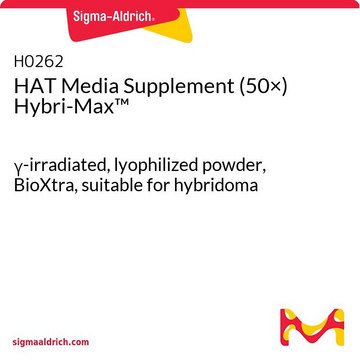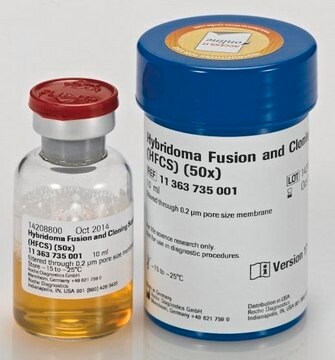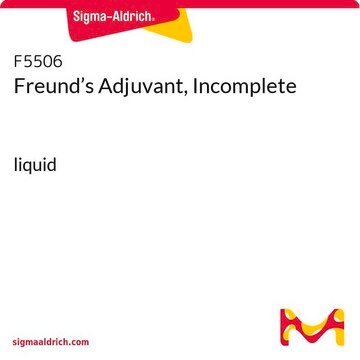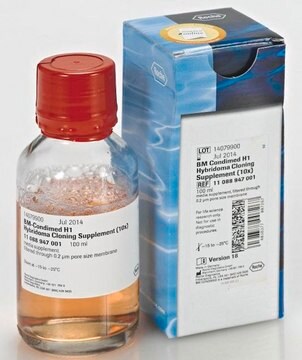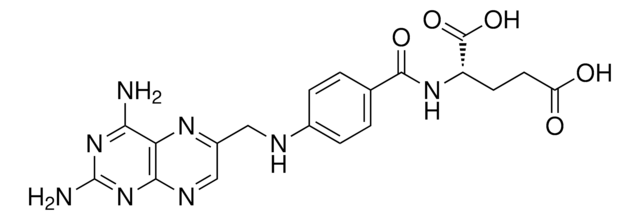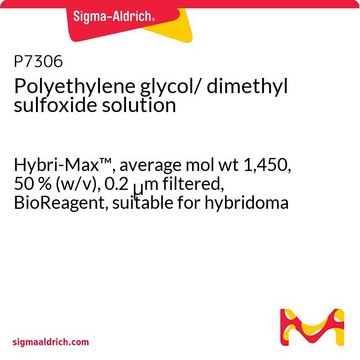H0137
HT-Medien-Supplement (50×) Hybri-Max™
lyophilized powder, suitable for hybridoma, BioXtra
Synonym(e):
HT Supplement, Hypoxanthine-Thymidin (HT) media supplement
About This Item
Empfohlene Produkte
Produktbezeichnung
HT-Medien-Supplement (50×) Hybri-Max™, lyophilized powder, γ-irradiated, BioXtra, suitable for hybridoma
Qualitätsniveau
Sterilität
γ-irradiated
Produktlinie
BioXtra
Form
lyophilized powder
Methode(n)
cell culture | hybridoma: suitable
Verunreinigungen
endotoxin, tested
Lagertemp.
−20°C
Anwendung
Rekonstituierung
Rechtliche Hinweise
Lagerklassenschlüssel
11 - Combustible Solids
WGK
WGK 3
Flammpunkt (°F)
Not applicable
Flammpunkt (°C)
Not applicable
Persönliche Schutzausrüstung
Eyeshields, Gloves, type N95 (US)
Hier finden Sie alle aktuellen Versionen:
Besitzen Sie dieses Produkt bereits?
In der Dokumentenbibliothek finden Sie die Dokumentation zu den Produkten, die Sie kürzlich erworben haben.
Kunden haben sich ebenfalls angesehen
Protokolle
XTT assay protocol for measuring cell viability, proliferation, activation and cytotoxicity. Instructions for XTT reagent preparation and examples of applications.
Unser Team von Wissenschaftlern verfügt über Erfahrung in allen Forschungsbereichen einschließlich Life Science, Materialwissenschaften, chemischer Synthese, Chromatographie, Analytik und vielen mehr..
Setzen Sie sich mit dem technischen Dienst in Verbindung.